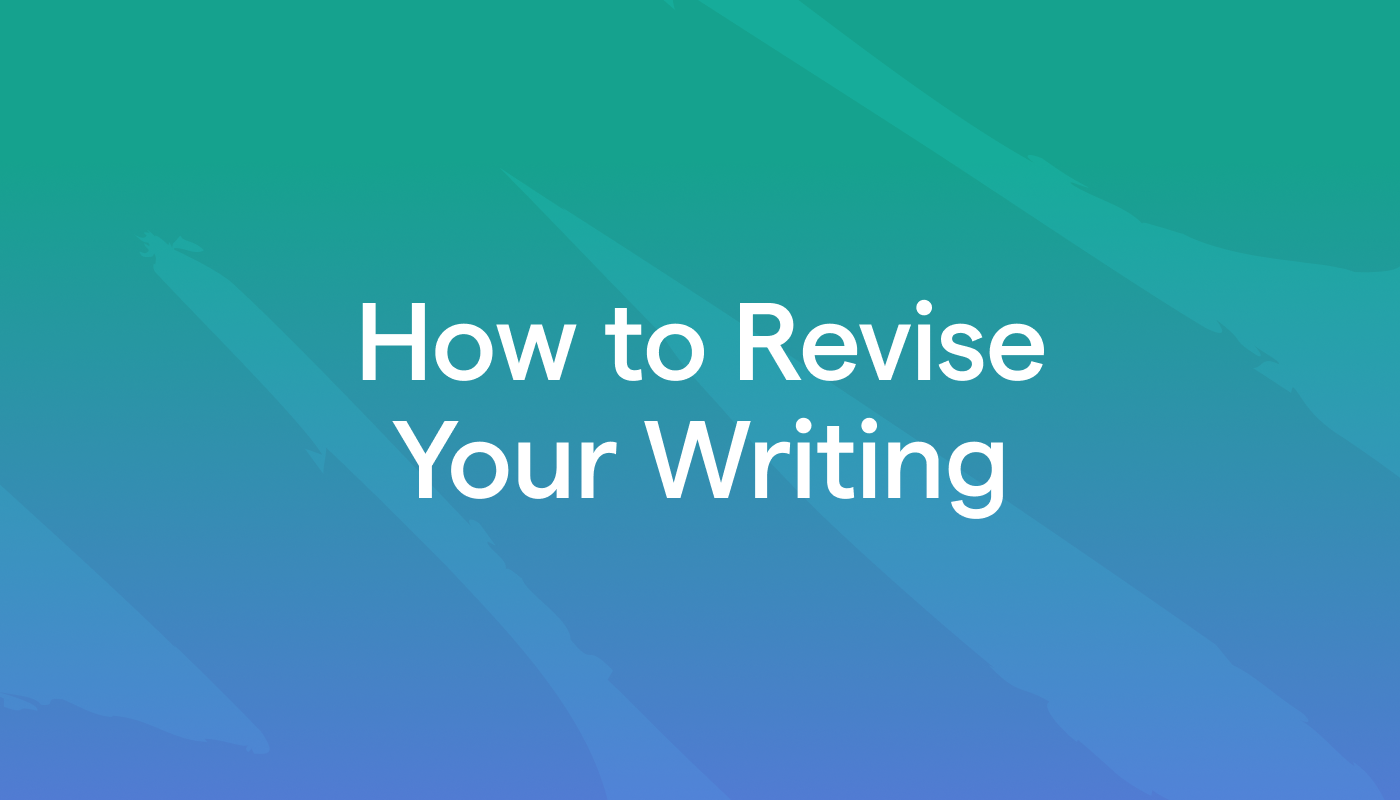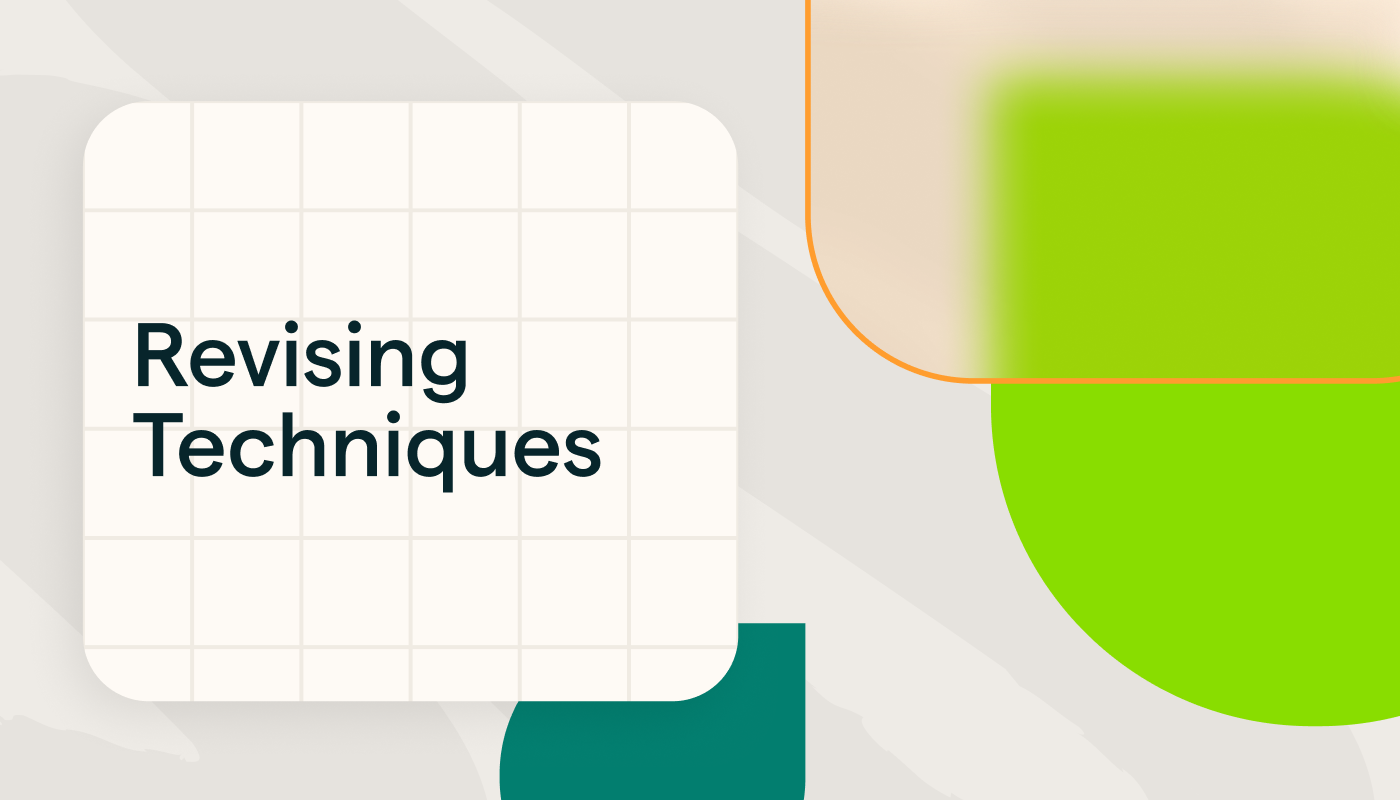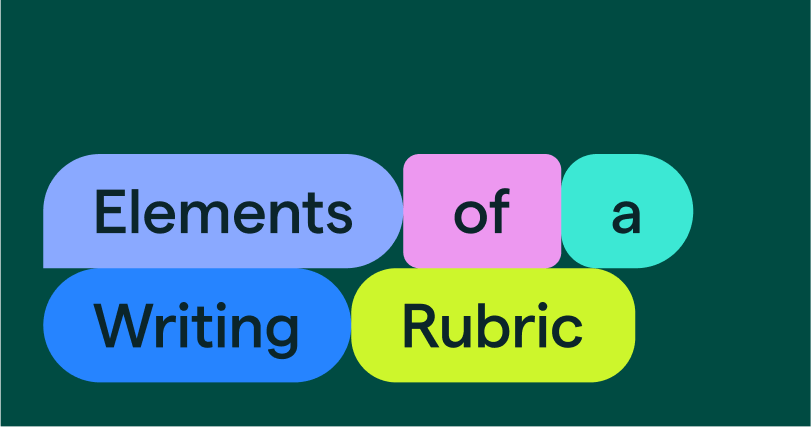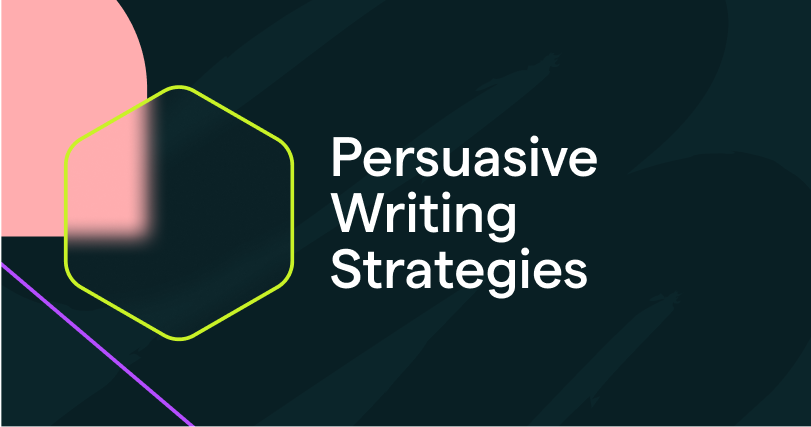What is revising? Tips to improve your rough draft
Revising is the stage of the writing process where you focus on strengthening your content, structure, and clarity. Unlike editing or proofreading, revising is the process of shaping rough ideas into strong, coherent writing. This guide will help you refine your message, enhance organization, and ensure your writing says exactly what you intend.
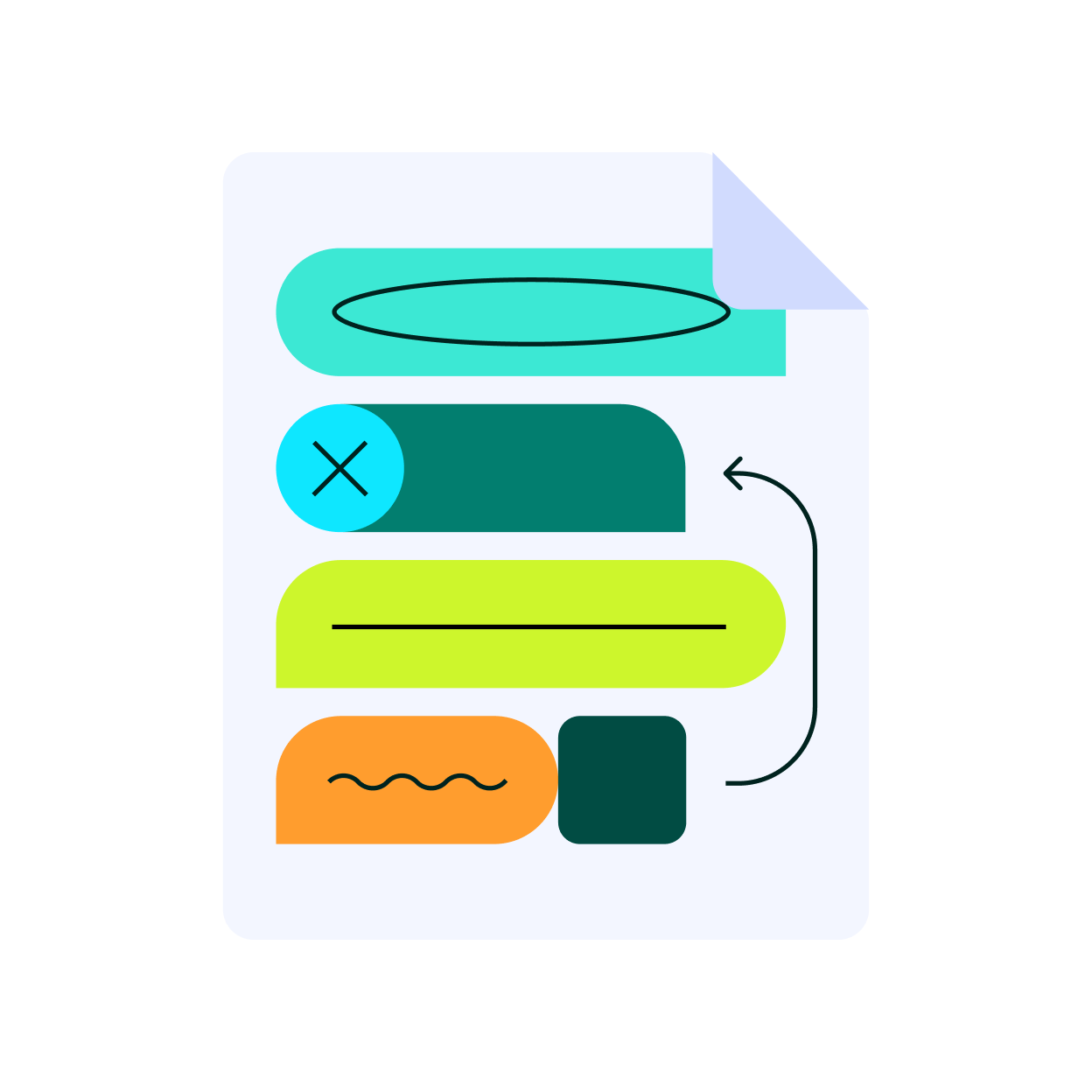
Definition of revising
Revising is the stage of the writing process where you refine your writing. This stage is focused on improving the content, structure, and clarity of your writing.
While the rough draft stage is all about getting your ideas down, no matter how messy, revising gives you the opportunity to strengthen your message, sharpen your tone, and organize your thoughts more effectively. It is where your writing takes shape and your ideas become more focused and impactful.
Unlike editing or proofreading, which deal with grammar and sentence-level fixes, revision is about big-picture improvements. This might mean reorganizing sections for better flow or cutting tangents that don’t support your main idea. You might also add stronger evidence, examples, or citations to support your ideas.
Need help revising your draft? Grammarly’s AI can highlight unclear sentences, suggest rewording, and help you improve flow and coherence so you can turn a rough draft into polished writing with confidence.
While the rough draft stage is all about getting your ideas down, no matter how messy, revising gives you the opportunity to strengthen your message, sharpen your tone, and organize your thoughts more effectively. It is where your writing takes shape and your ideas become more focused and impactful.
Unlike editing or proofreading, which deal with grammar and sentence-level fixes, revision is about big-picture improvements. This might mean reorganizing sections for better flow or cutting tangents that don’t support your main idea. You might also add stronger evidence, examples, or citations to support your ideas.
Need help revising your draft? Grammarly’s AI can highlight unclear sentences, suggest rewording, and help you improve flow and coherence so you can turn a rough draft into polished writing with confidence.
Benefits of revising
Revising helps you move beyond your initial ideas to create stronger, more focused writing. It allows you to clarify your message, improve organization, and ensure your work resonates with your audience.
Here are a few of the key benefits of revising:
Here are a few of the key benefits of revising:

Improves clarity and coherence
Revision helps you organize your ideas logically so your writing is clear and readable.

Strengthens impact
Revision helps you better support your main idea and tailor your message to connect with your audience effectively.

Fosters critical thinking
Revisiting a draft encourages you to question assumptions, identify gaps, and deepen your analysis.

Boosts confidence
Knowing you’ve refined and strengthened your writing makes you more comfortable sharing it with others.
Revising vs. editing vs. proofreading
When refining a piece of writing, the terms revising, editing, and proofreading are often used interchangeably. However, these terms are not synonymous. They are related, sometimes overlapping practices, but they serve unique goals in your writing process.
Revising (also known as developmental editing)
- Focuses on content and ideas
- Evaluates overall structure and logical flow
- Clarifies purpose, thesis, and messaging for the target audience
- Adds, removes, or reorganizes sections to strengthen the argument
- Revises sentences for clarity, concision, and readability
- Corrects grammar, punctuation, and syntax mistakes
- Checks for adherence to your chosen style guide (e.g., AP, Chicago Manual of Style, or your company style guide)
- Ensures smooth transitions and consistent terminology
- Catches final typos, misspellings, and minor grammatical mistakes
- Checks punctuation, capitalization, and numerical formatting
- Verifies layout and formatting consistency (headings, fonts, spacing, etc.)
- Confirms that all previous revisions and edits were applied correctly without introducing new mistakes
How to revise effectively
Revising your writing can seem overwhelming, but approaching it in clear, manageable steps makes the process more effective and less stressful.
Here are four simple steps to make your revising easier and more productive.
Here are four simple steps to make your revising easier and more productive.
1. Take a break: Get some distance for a fresh perspective
- After writing your first draft, take a break. Even a short pause helps you return with clearer eyes and more objectivity.
- Review the focus and structure of the piece. Is your draft focused on your intended message? Does the overall structure of the draft support that message? If you’re working on a school assignment, reread the assignment prompt or rubric to make sure your draft fulfills the assignment requirements.
- Construct a clear beginning, middle, and end. Does each paragraph’s main idea flow logically to the next? Add transitions between paragraphs to help guide the reader.
- Share your draft with a trusted peer. Ask them to comment on clarity, tone, and organization—what made sense, what felt unclear, and what could be improved. A fresh set of eyes can reveal things you've overlooked and help you refine your message.
Revising techniques
Effective revision isn’t just about reading your draft over and over. Using specific revising techniques can help you identify structural issues, improve clarity, and revise more efficiently. Try one or combine them to figure out what works for you.
Reverse outlining: The process of creating an outline after drafting to identify the main ideas in each paragraph and evaluate the structure and flow of your writing
- To reverse outline, write down the key idea or purpose in the margin or on a separate sheet for each paragraph. Does the sequence of ideas make sense? Are any paragraphs irrelevant or out of place? Using a reverse outline helps you spot gaps in logic or places where you might need to
reorder or refine paragraphs for better flow.
- If you find yourself tripping over a sentence or pausing for breath, that could mean the sentence is too long or convoluted. Reading aloud also helps you check the tone and rhythm of your writing. Try combining this strategy with a peer review. Hearing someone else read your work can reveal issues you might not catch on your own.
- Use different colors for elements like your thesis statement, topic sentences, evidence, and analysis—for example, highlight topic sentences in blue and supporting evidence in yellow. After color-coding, check for imbalances: Are any paragraphs missing topic sentences? Do you have too much evidence with too little analysis? This technique helps you quickly spot gaps and redundancies.
- Whether you use paper or a digital medium like slides, experiment with the sequence of your content. You might discover, for example, that your third paragraph works better near the beginning or that background information needs to move earlier.
Revising with Grammarly’s AI
Revising is where good writing becomes great, but it takes much more than a spell-check to get there. Whether you’re improving clarity, strengthening structure, or fine-tuning your tone, effective revision means stepping back, rethinking, and reshaping your work with purpose.
AI tools can support this process but can’t replace your insight. A rough draft often needs more than just surface edits. It might be poorly structured, off topic, or missing a clear point of view.
Grammarly’s AI is built specifically to help with this stage. It’s designed to give you feedback on everything from tone and organization to overall logic. And because Grammarly works where you write, you can stay in your revising flow without switching browser tabs.
Here’s how Grammarly supports your revision process:
AI tools can support this process but can’t replace your insight. A rough draft often needs more than just surface edits. It might be poorly structured, off topic, or missing a clear point of view.
Grammarly’s AI is built specifically to help with this stage. It’s designed to give you feedback on everything from tone and organization to overall logic. And because Grammarly works where you write, you can stay in your revising flow without switching browser tabs.
Here’s how Grammarly supports your revision process:

Suggests big-picture improvements
Looking for ways to elevate your draft? Grammarly makes it easy. With a single prompt, it can suggest a clearer structure, smoother flow, or stronger logic, helping you take your writing to the next level.
Helps you strengthen your main idea
Inspired by real experts, Grammarly highlights opportunities to clarify logic and focus. With concrete edits and questions to consider, you can tighten structure and make your core message powerful.
Expert review _ Cats in Art History _ product example
Reader Reactions _ Resume _ Summer Internship Coordinator _ product example
Makes your message resonate
Set your audience and get feedback that fits them. Grammarly highlights confusion points, calibrates tone and detail, and offers edits that make your key points land.
Revising checklist
This checklist covers all the essential areas to review when revising your writing—from purpose and organization to clarity, development, and citations. Use it to make sure your work is well developed, focused, and ready to share.
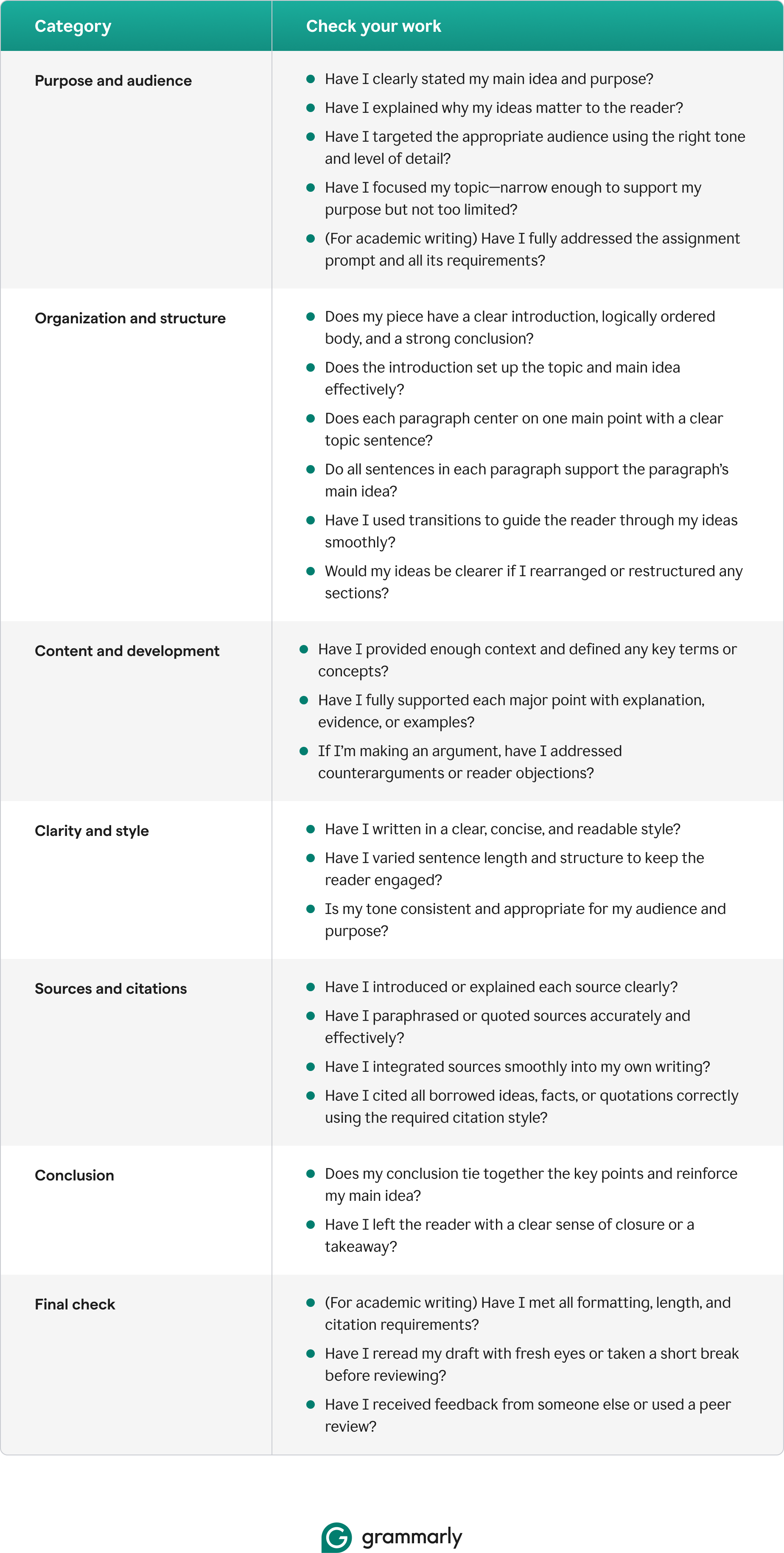
A user using Docs to access Grammarly agents
Docs: Your thinking space and writing space, finally in one place
Introducing docs, a new AI writing surface and document editor that offers real-time support at every stage of your writing, from first draft to final delivery.
Learn more about docs
Learn more about docs
Revising resources
Whether you’re looking for a step-by-step guide or specific tips for your introduction, body paragraphs, or conclusion, find everything you need to write your rough draft.
Frequently asked questions
Is revising necessary?
Absolutely. Revising turns your draft into polished writing by reshaping ideas, plugging logical gaps, and smoothing the flow long before you fuss over grammar, punctuation, and spelling. When you revise, your arguments grow clearer, your evidence stronger, and your writing more engaging. You’ll also save time in later edits and make it easier for your readers to understand your main idea.
How long should it take to revise my writing?
Aim to spend roughly 20–30 percent of your total writing time on revision. If a draft took ten hours to create, budget two to three hours for revising, ideally split into two sessions so you return with fresh eyes. Longer, research-heavy pieces may need an additional pass.
How do I start revising my writing?
Step away for a few hours after finishing your draft, or overnight, if possible. When you return, read it straight through once to test the overall flow and note where the argument stalls or ideas feel out of order. This “big-picture pass” is your first step in revising. Check out our revising checklist for a full guide to revising your writing.
What is the difference between revising and editing?
Both are essential to improving writing, but the difference lies in scale. Revising makes big-picture changes such as reordering sections, adding or cutting ideas, and strengthening the argument. Editing fine-tunes the small picture by tightening sentences and fixing grammar, punctuation, and mechanics.
What is an example of revising?
A clear example of revision is reordering and reshaping ideas to improve clarity. Imagine your draft defines a key term halfway through. During revision, you move that definition and its supporting paragraph to the introduction, tighten the topic sentence, and delete any now-repetitive material farther down. This structural change sharpens the argument for readers.
Explore the writing process
Get support for every stage of the writing process. No matter where you are in your journey, Grammarly is your writing partner. Its AI supports you from ideation to final polish, and every step in between.
Brainstorming
Learn strategies for generating ideas and expanding your thinking. Tap into creative brainstorming methods and AI-powered suggestions that spark fresh angles and unexpected connections.
Learn More →
Learn More →

Outlining
Discover how to turn scattered thoughts into a clear, logical outline that sets your draft up for success. Build a solid foundation with advice on which outline type to choose and support from Grammarly’s AI outline generator.
Learn More →
Learn More →

Rough draft
Unlock ways to make writing easier and more efficient. Get practical tips to overcome writer's block, maintain momentum, and use Grammarly’s AI to make rough drafts less rough.
Learn More →
Learn More →
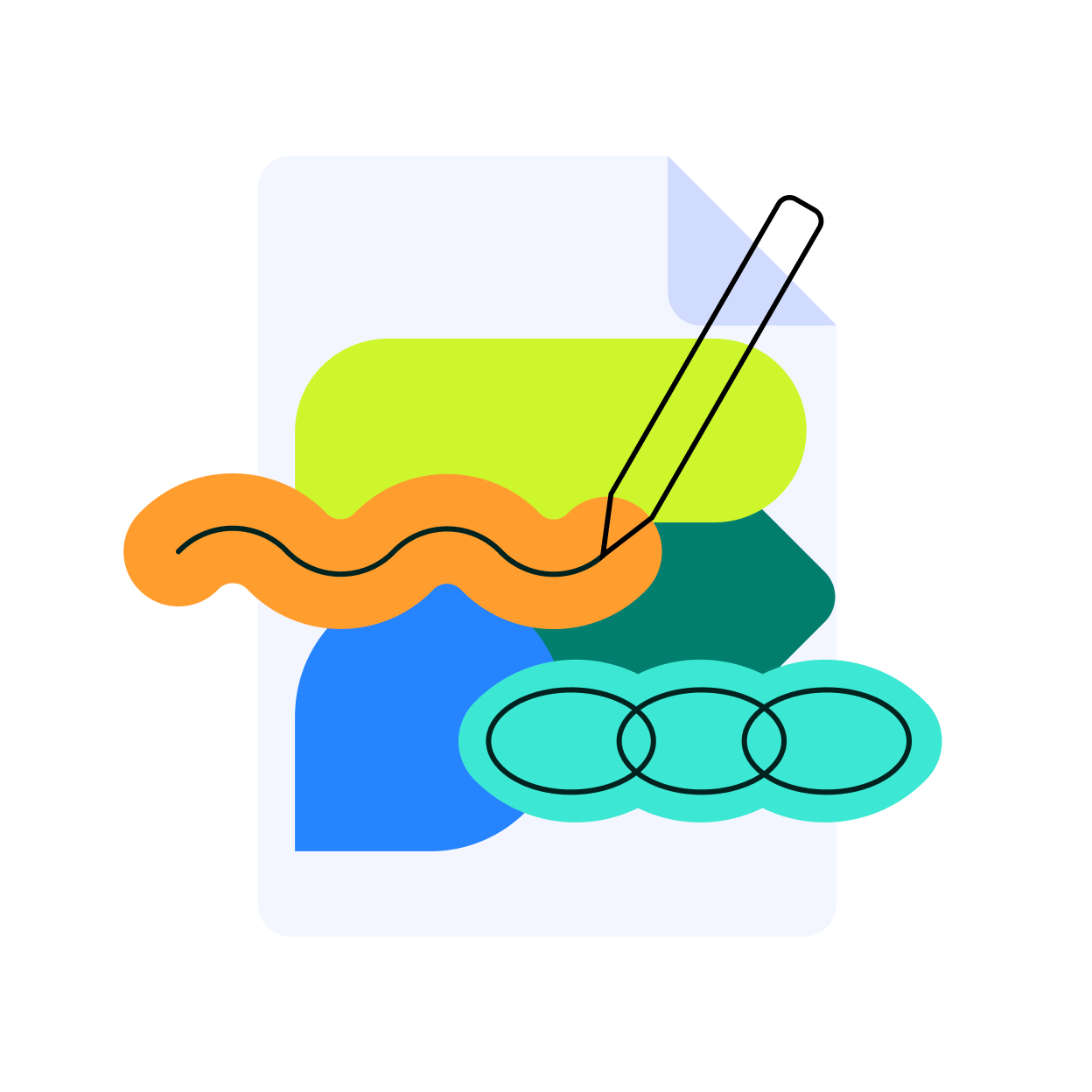
Proofreading
Learn how to proofread your work effectively so your finished product is polished and ready for readers. Build your proofreading skills with step-by-step guides supported by the world’s best AI proofreader.
Learn More →
Learn More →
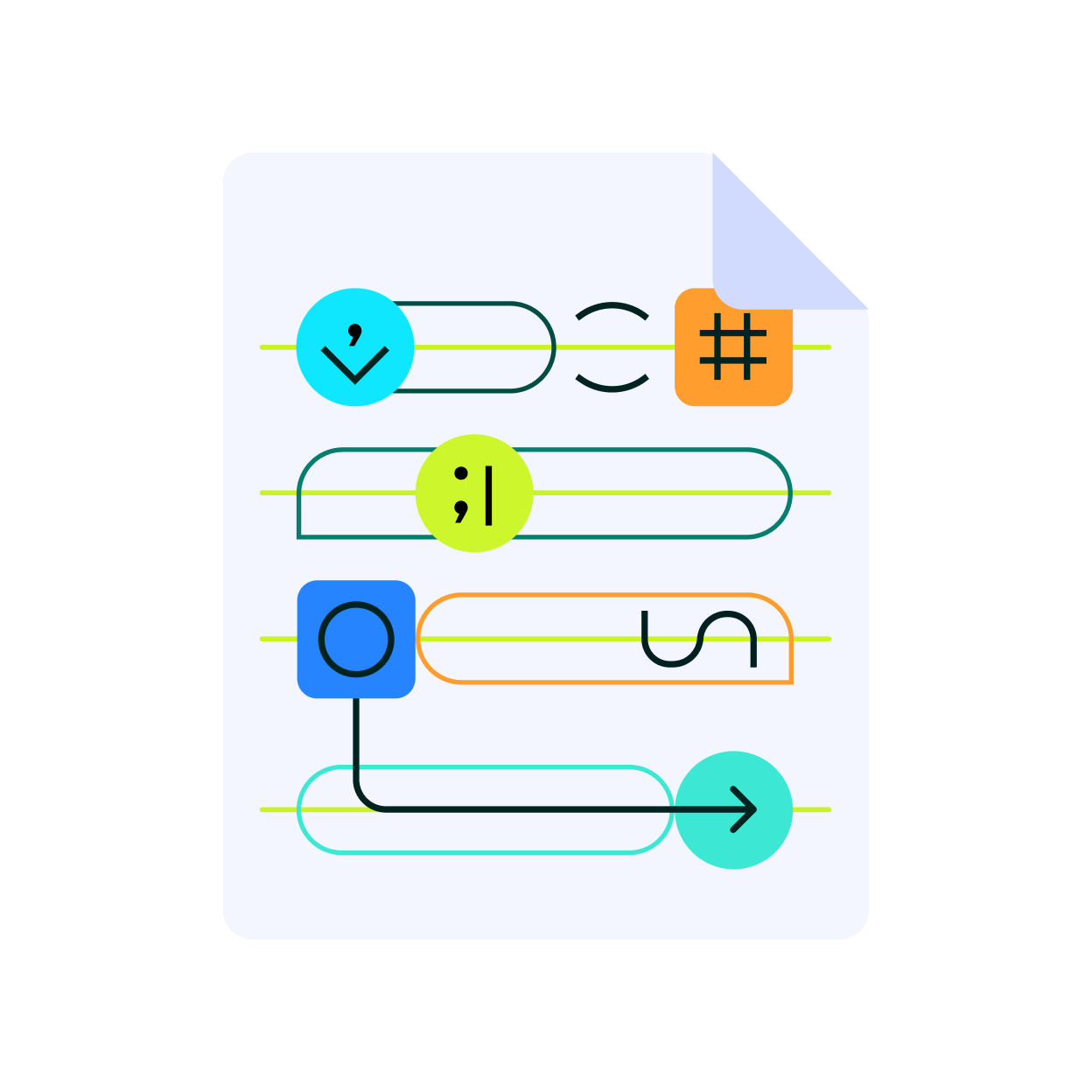
Brainstorming
Learn strategies for generating ideas and expanding your thinking. Tap into creative brainstorming methods and AI-powered suggestions that spark fresh angles and unexpected connections.
Learn More →
Learn More →

Outlining
Discover how to turn scattered thoughts into a clear, logical outline that sets your draft up for success. Build a solid foundation with advice on which outline type to choose and support from Grammarly’s AI outline generator.
Learn More →
Learn More →

Rough draft
Unlock ways to make writing easier and more efficient. Get practical tips to overcome writer's block, maintain momentum, and use Grammarly’s AI to make rough drafts less rough.
Learn More →
Learn More →

Proofreading
Learn how to proofread your work effectively so your finished product is polished and ready for readers. Build your proofreading skills with step-by-step guides supported by the world’s best AI proofreader.
Learn More →
Learn More →

Stay in flow with AI assistance that works where you do
Grammarly works across 1 million+ apps and websites, so you can go from idea to final draft without copying, pasting, or breaking focus.
